A celebratory exhibition of contemporary and historic plant portraits
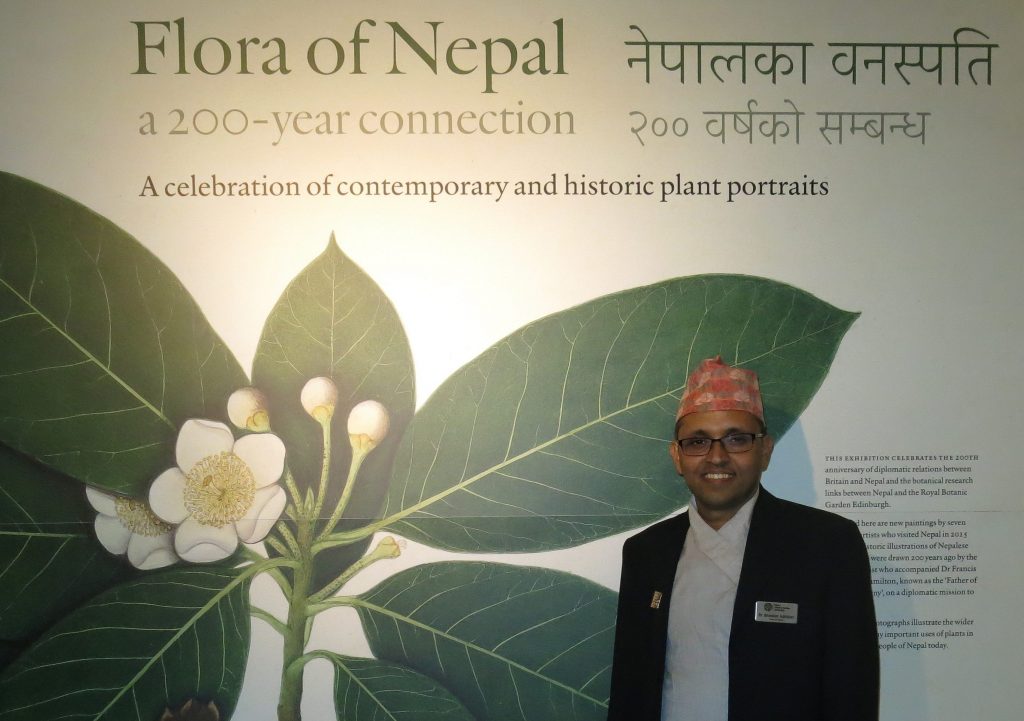 As Britain and Nepal mark 200 years of diplomatic relations, RBGE is celebrating its own unique relationship with Nepal. By the time the Treaty of Segauli was signed, in March 1816, RBGE’s scientific links were already well-established. They extended back to 1802 when Scottish surgeon-naturalist Dr Francis Buchanan-Hamilton made the first natural history collections in Nepal. Known as the ‘Father of Nepalese botany’, his research established a collaboration continuing to this day with the Flora of Nepal programme.
As Britain and Nepal mark 200 years of diplomatic relations, RBGE is celebrating its own unique relationship with Nepal. By the time the Treaty of Segauli was signed, in March 1816, RBGE’s scientific links were already well-established. They extended back to 1802 when Scottish surgeon-naturalist Dr Francis Buchanan-Hamilton made the first natural history collections in Nepal. Known as the ‘Father of Nepalese botany’, his research established a collaboration continuing to this day with the Flora of Nepal programme.
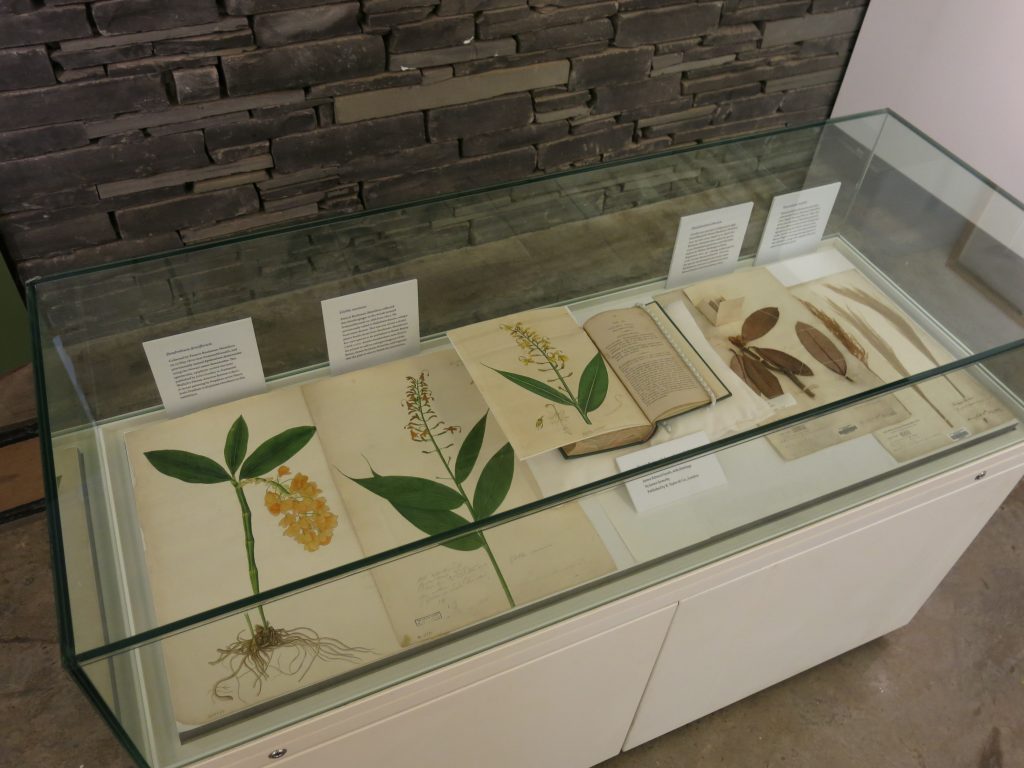 Buchanan-Hamilton was taught botany by Professor John Hope in RBGE’s classroom of the Scottish Enlightenment – recently rebuilt as the ‘Botanic Cottage‘. During his year in Nepal, Buchanan-Hamilton put his botanical skills to good
Buchanan-Hamilton was taught botany by Professor John Hope in RBGE’s classroom of the Scottish Enlightenment – recently rebuilt as the ‘Botanic Cottage‘. During his year in Nepal, Buchanan-Hamilton put his botanical skills to good
use, collecting and documenting over 1100 plant species. Some plants were difficult to preserve and he instructed his Bengali artist to depict over 100 of these in coloured drawings, some of which are on loan from the Linnean Society of London for this exhibition and Henry Noltie’s botanical art display in I Still Believe in Miracles.
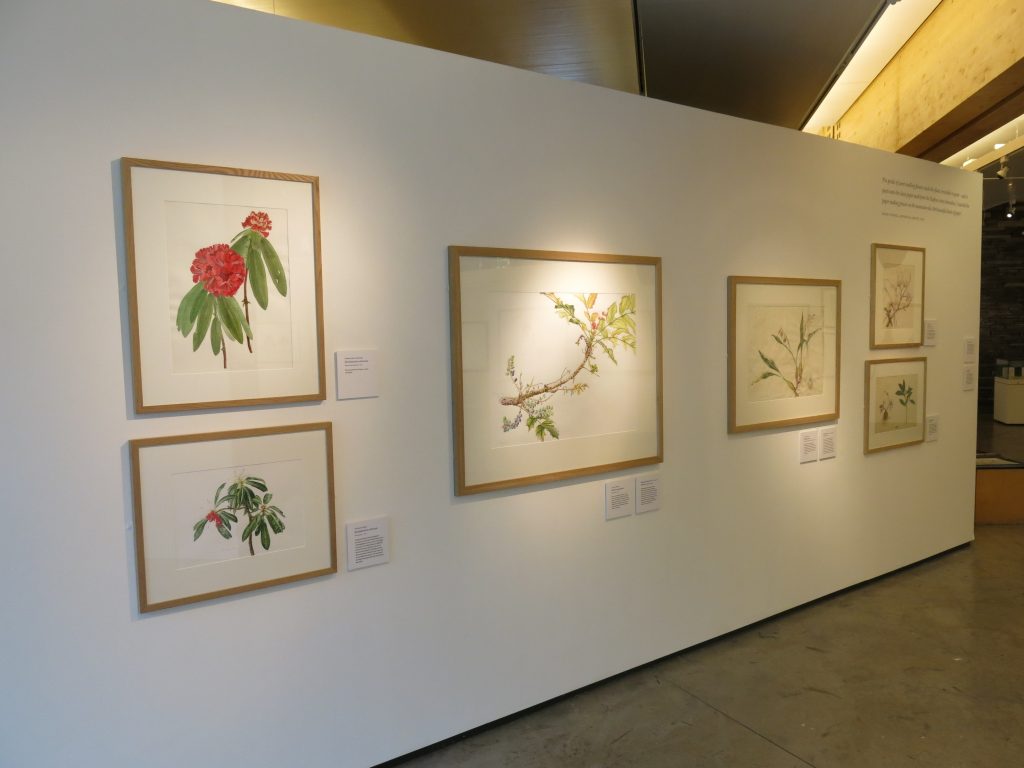 In March 2015 a group of six botanical artists with RBGE connections visited Nepal to study its flora and teach botanical painting workshops in a local school. Through drawing and reference photographs made on excursions, the artists (Claire Banks, Lyn Campbell, Işık Güner, Jacqui Pestell, Sarah Roberts and Sharon Tingey) gathered source material to complete the detailed botanical works now on display highlighting Nepal’s remarkable biodiversity. Drawings by Nepalese artist Neera Joshi Pradhan complete the picture, adding the bold, rich colours of local paintings to the wide variety of artistic styles shown.
In March 2015 a group of six botanical artists with RBGE connections visited Nepal to study its flora and teach botanical painting workshops in a local school. Through drawing and reference photographs made on excursions, the artists (Claire Banks, Lyn Campbell, Işık Güner, Jacqui Pestell, Sarah Roberts and Sharon Tingey) gathered source material to complete the detailed botanical works now on display highlighting Nepal’s remarkable biodiversity. Drawings by Nepalese artist Neera Joshi Pradhan complete the picture, adding the bold, rich colours of local paintings to the wide variety of artistic styles shown.
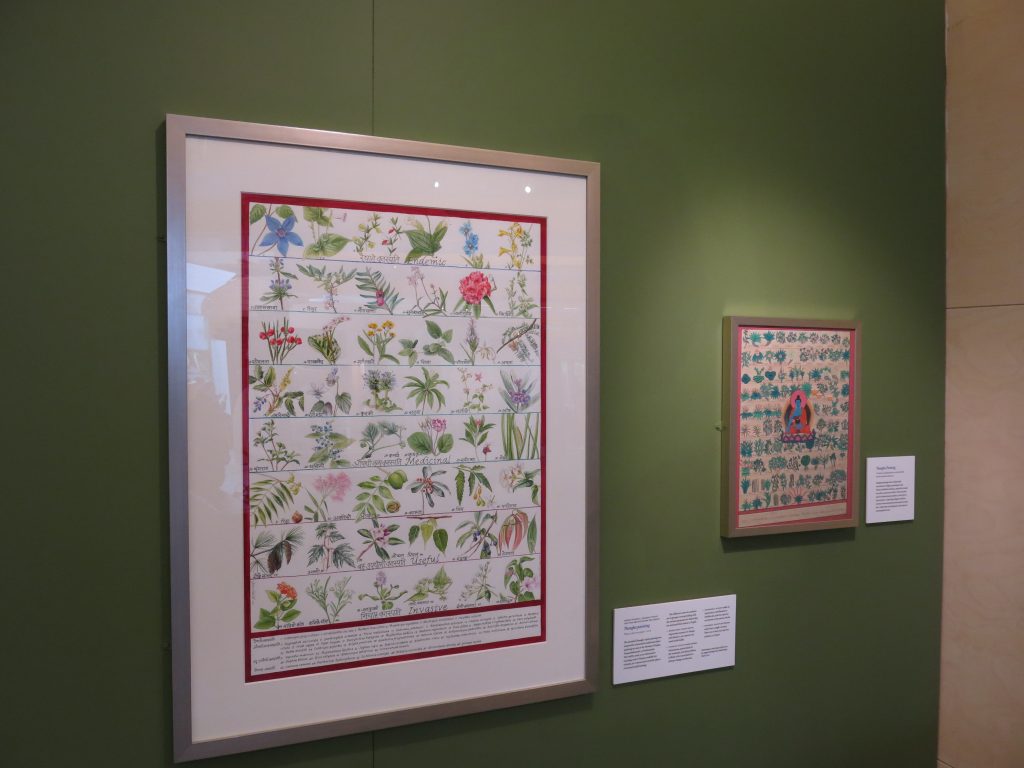 Whilst in Nepal the Edinburgh artists saw the stylised plants portrayed in traditional Tibetan thanka paintings still made by artisans in Kathmandu. They were inspired to create one of their own and worked with the Flora of Nepal team to produce a modern take on this ancient idea. The remarkable result is a unique painting of rare, medicinal, useful and invasive plants, which together highlight botanical bounty of Nepal and the pressing need for conservation and sustainable use of this incredibly rich biodiversity.
Whilst in Nepal the Edinburgh artists saw the stylised plants portrayed in traditional Tibetan thanka paintings still made by artisans in Kathmandu. They were inspired to create one of their own and worked with the Flora of Nepal team to produce a modern take on this ancient idea. The remarkable result is a unique painting of rare, medicinal, useful and invasive plants, which together highlight botanical bounty of Nepal and the pressing need for conservation and sustainable use of this incredibly rich biodiversity.
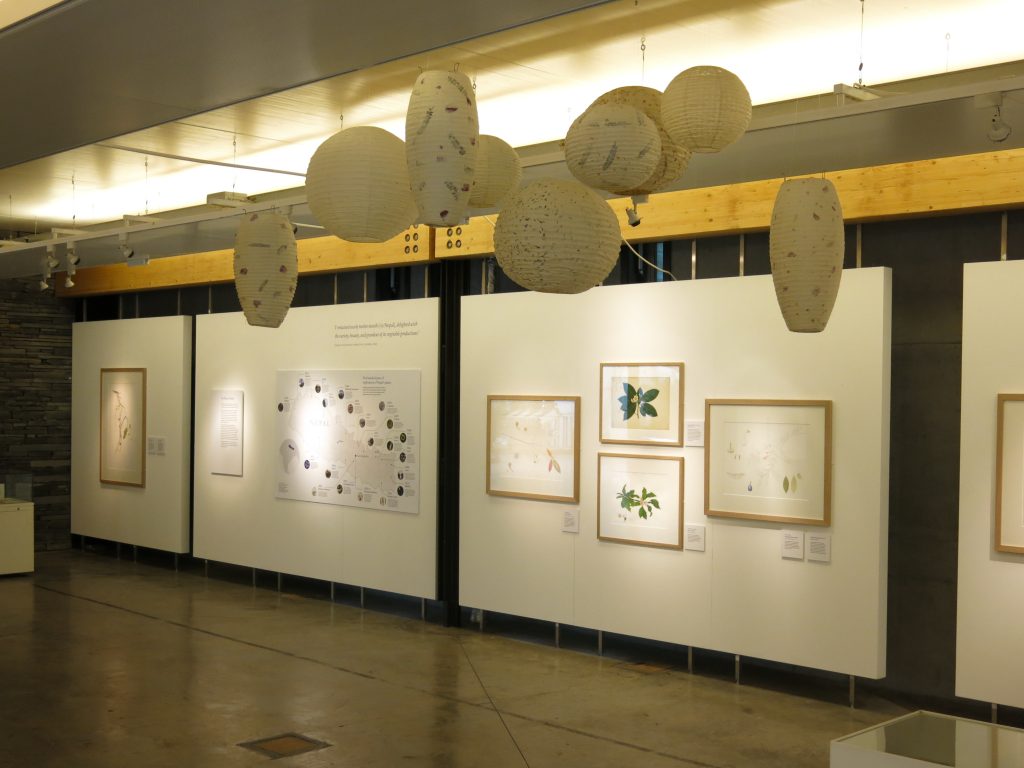 Nepalese hats (topis) with rhododendron designs, fabrics dyed with safflower, the ubiquitous but beautiful grass brooms, and clothes made of ‘allo’ – fibres from the giant nettle – are amongst the artefacts showing the links between people and plants. Lokta paper lanterns made from Daphne bark hang from the ceiling, and a back strap loom used to weave allo has been brought from eastern Nepal. Three films recount the journey made by the artists to Kathmandu, Jacqui’s painting of Daphne on lokta paper, and the spinning and weaving of nettle fibres.
Nepalese hats (topis) with rhododendron designs, fabrics dyed with safflower, the ubiquitous but beautiful grass brooms, and clothes made of ‘allo’ – fibres from the giant nettle – are amongst the artefacts showing the links between people and plants. Lokta paper lanterns made from Daphne bark hang from the ceiling, and a back strap loom used to weave allo has been brought from eastern Nepal. Three films recount the journey made by the artists to Kathmandu, Jacqui’s painting of Daphne on lokta paper, and the spinning and weaving of nettle fibres.
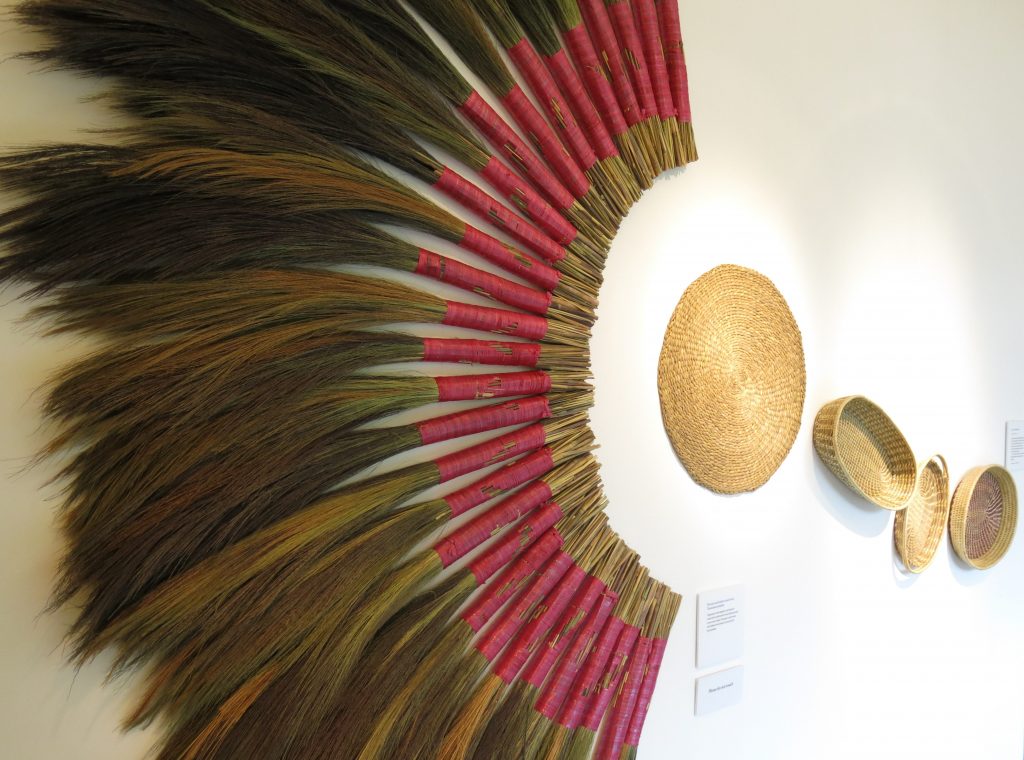 The exhibition runs from 6th August to 6th November 2016, at the John Hope Gateway. Admission free.
The exhibition runs from 6th August to 6th November 2016, at the John Hope Gateway. Admission free.
Michelle Harding’s blog features this exhibition and other RBGE Nepalese activities relating to the Britain Nepal Bicentenary.

Kirsten Lund
We visited the exhibition dringend our holiday in scotland. It was impressing and we lied the drawings a lot. I remember that it was possible to order prints of some of These drawings. Would that still be possible total? If so, I’ like to know which ones are on offer.
Thank you so much for a reply.